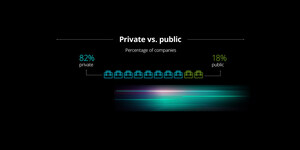NEW YORK, Dec. 13, 2016 /PRNewswire/ -- As increasingly more leaders realize risk is no longer a hazard to fear and avoid, but instead a performance-driver and value-creator worth embracing, Deloitte Advisory explores 10 risk trends likely to continue through 2017 in its new "Future of Risk" report.
"Organizations that enhance their brand in the marketplace, disrupt through innovation, and execute with operational excellence are better positioned to identify and capitalize on risks. Everything from cognitive technologies to more advanced governance models offers leaders the opportunity to safeguard their reputations while evolving their corporate strategies," said Chuck Saia, Deloitte Advisory's newly appointed chief executive officer with Deloitte & Touche LLP. "But it takes real commitment, cultural change, and courage to turn a risk-fearing organization into a risk-leveraging one. We've identified 10 trends that have the potential to significantly alter the corporate risk landscape."
The October 2016 appointment of Saia as Deloitte Advisory CEO comes at a time when the risk landscape provides both opportunity and uncertainty for organizations competing in a fluid cultural and economic climate. Saia views such a landscape as an incubator for disruption that underscores the importance of organizational scenario-planning and adoption of risk-sensing tools.
The 10 trends profiled in the report:
- Augmenting human decision-making with cognitive technologies –Advancements in cognitive technologies, artificial intelligence and data analytics are helping organizations use smart machines to detect, predict, manage and prevent risks.
- Leveraging pervasive controls – The Internet of Things is equipped with a variety of sensors, communications and computing capabilities that serve as risk monitoring and enforcement points for everything from tracking product safety across a supply chain to preventing fraud via context-aware identity access capabilities.
- Informing risk insights with behavioral science – As behavioral science in the workplace gains momentum, companies are harnessing risk insights derived from it to detect risky behavior and cognitive biases while also strengthening protocols.
- Complementing prevention with vigilance and resilience – Because some risk prevention methods can yield unwelcome side effects like slowing innovation, organizations are expanding their approaches to focus on vigilance (detecting patterns that may indicate or even predict risk events) and resilience (the capacity to rapidly contain and reduce the impact of risk events).
- Looking more closely at the transfer of risk – The growth in mega-impact events like cyberattacks, political unrest and climate change — and their growing financial and reputational impacts — are driving companies to re-examine insurance and contracts as business hedges.
- Innovating ahead of the current regulatory framework – Innovation often outpaces regulation – and in some instances drives the regulatory agenda. Some organizations are taking on high-risk innovations as a strategy — even when they fall outside the scope of existing regulations — and reaping rewards both on the business side and in helping their respective industry ecosystems to develop regulatory frameworks.
- Turning risk into a performance enabler – As risks become more measurable and tangible, organizations will be better positioned to determine an accurate upside value for risk — and encourage a desired level of risk-taking behavior in a bid to balance risks and rewards.
- Collaborating on risk management in an increasingly networked economy – Sharing-based and crowd-driven initiatives are gaining more acceptance among stakeholders across industry ecosystems that include customers, employees, business partners, vendors, regulators, suppliers —and sometimes even competitors — leading to new collaborations in risk management.
- Advancing disruption sensing and preparedness – Executives are employing real-time monitoring, scenario planning, stress testing, war-gaming, and simulations to introduce more agility, adaptability and responsiveness into their organizations' strategic threat management efforts.
- Combating reputational risks – Consumer activism and hyper-connected communications channels have put a magnifying glass on reputational risks, leading organizations to foster more risk-intelligent strategies and monitoring systems that can allow them to get ahead of crises.
About Deloitte Advisory
Deloitte Advisory helps organizations turn critical and complex business issues into opportunities for growth, resilience and long-term advantage. Our market-leading teams help our clients manage strategic, financial, operational, technological, and regulatory risk to enhance enterprise value, while our experience in mergers and acquisitions, fraud, litigation and reorganizations helps clients emerge stronger and more resilient.
As used in this document, "Deloitte Advisory" means Deloitte & Touche LLP, which provides audit and enterprise risk services; Deloitte Financial Advisory Services LLP, which provides forensic, dispute and other consulting services; and its affiliate, Deloitte Transactions and Business Analytics LLP, which provides a wide range of advisory and analytics services. Deloitte Transactions and Business Analytics LLP is not a certified public accounting firm. These entities are separate subsidiaries of Deloitte LLP. Please see http://www.deloitte.com/us/about for a detailed description of the legal structure of Deloitte LLP and its subsidiaries. Certain services may not be available to attest clients under the rules and regulations of public accounting.
SOURCE Deloitte
Related Links
WANT YOUR COMPANY'S NEWS FEATURED ON PRNEWSWIRE.COM?
Newsrooms &
Influencers
Digital Media
Outlets
Journalists
Opted In






Share this article